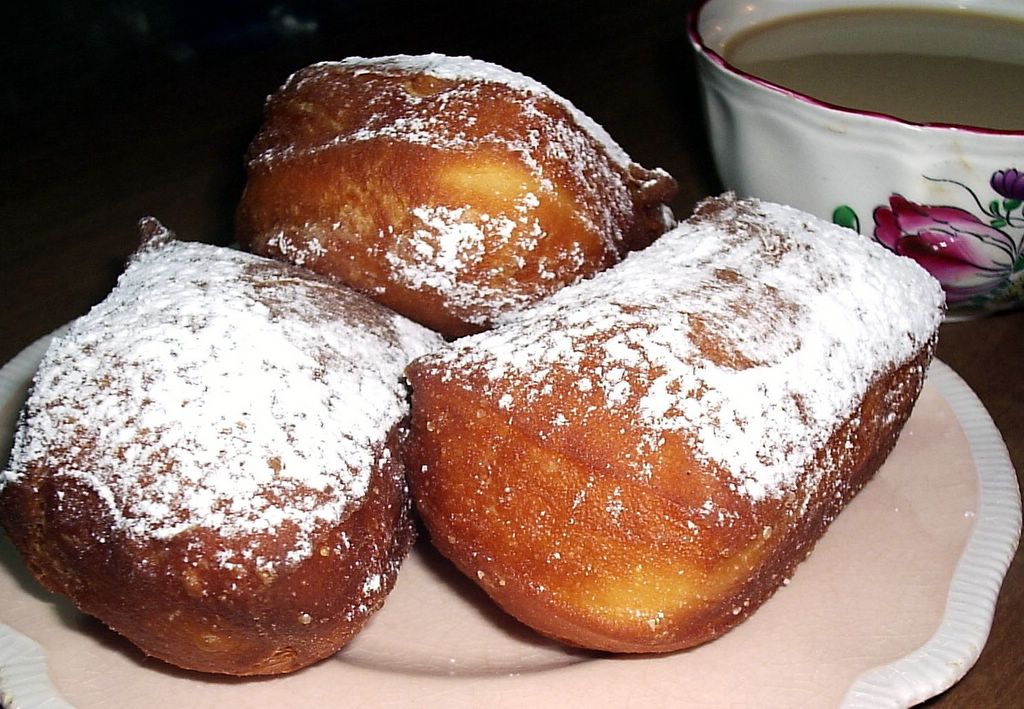
Pronounced "ben-YAYS", these are the rectangular doughnuts (no holes) served fresh and hot around the clock at Cafe du Monde in the French Market. (Another former French Market coffeehouse, Morning Call, moved to ... Metairie. Ugh.) When you hear people talking about "goin' fo' coffee an' doughnuts", this is what they mean. Cafe du Monde is open 24 hours a day, 7 days a week, and is usually quite busy at all hours. These aren't terribly difficult to prepare at home. Even though there's a CDM Beignet Mix (just add water, and it's as "easy as un-deux-trois-quatre", as the box says), it's not available out of New Orleans, and making this from scratch is fun. The yeast dough must be prepared in advance and refrigerated overnight. It seems that for home preparation the dough works better in the large quantity given here, enough for about 5 dozen beignets. Don't worry, though ... the dough keeps well under refrigeration for about a week. Just cut off some dough when you want to make beignets -- roll it out, cut it up, and fry for about 3 minutes per batch. Don't forget the powdered sugar, lots of it. Or, just invite enough people over to eat all 5 dozen.
Serve, of course, with piping hot café au lait.
1 package active dry yeast
1-1/2 cups warm water (100-115 degrees F)
1/2 cup sugar
1 teaspoon salt
2 large eggs
1 cup evaporated milk
7 cups flour
1/4 cup vegetable shortening oil for deep frying confectioner's sugar for dusting (or burying, depending on taste)
Put the warm water into a large bowl, then sprinkle in the yeast and a couple teaspoons of the sugar and stir until thoroughly dissolved. Let proof for 10 minutes. Add the rest of the sugar, salt, eggs, and evaporated milk. Gradually stir in 4 cups of the flour and beat with a wooden spoon until smooth and thoroughly blended. Beat in the shortening, then add the remaining flour, about 1/3 cup at a time, beating it in with a spoon until it becomes too stiff to stir, then working in the rest with your hands. Cover the bowl with plastic wrap and refrigerate overnight in a greased bowl.
Roll the dough out onto a floured board or marble pastry surface to a thickness of 1/8 inch, then cut it into rectangles 2-1/2 inches by 3-1/2 inches with a sharp knife. Heat the oil in a deep fryer to 360 degrees F. Fry the beignets about 3 or 4 at a time until they are puffed out and golden brown on both sides, about 2-3 minutes per batch. Turn them over in the oil with tongs once or twice to get them evenly brown, since they rise to the surface of the oil as soon as they begin to puff out. Drain each batch, place on a platter lined with several layers of paper towels, and keep warm in a 200 degree F oven until they're all done.
Serve 3 beignets per person, sprinkling heavily with powdered sugar, and serve hot with cafe au lait. Recipe source

